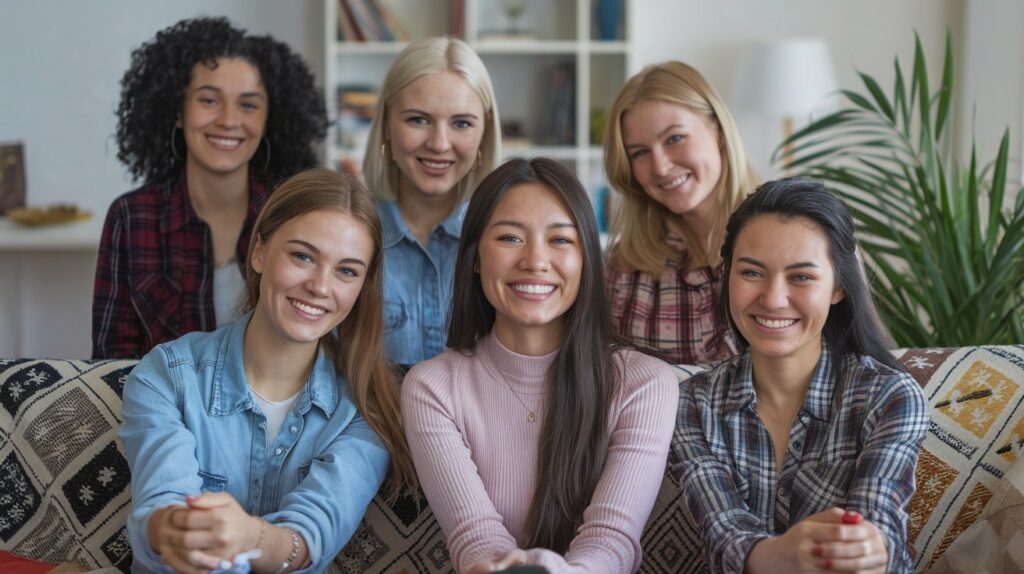Social Media Girls: Empowering Young Women in the Digital Age

The social media girls captures the vibrant presence of young women navigating platforms like TikTok, Instagram, and Snapchat, where they express creativity, build communities, and shape digital culture. As social media is a cornerstone of adolescent life, with 46% of U.S. teens reporting near-constant online activity, and girls are particularly active on image-driven platforms. However, the digital landscape presents both opportunities and challenges, from empowerment and self-expression to cyberbullying and unrealistic beauty standards.
Table of Contents
The Role of Social Media in Girls Lives
Social media is a primary space for girls to connect, create, and define their identities. According to a 2024 Pew Research Center survey, 66% of teen girls use TikTok, 66% use Instagram, and 55% use Snapchat, compared to lower usage among boys. These platforms are more than entertainment they’re tools for self-expression, relationship-building, and exploring interests. Girls often post about personal beliefs, feelings, and achievements, using social media to craft their public personas.
Why Girls Gravitate Toward Social Media
- Connection: Platforms like Instagram allow girls to stay in touch with friends and join communities around shared hobbies, from fashion to activism.
- Creativity: TikTok’s short-form videos enable girls to showcase talents like dance, art, or storytelling, with 42% of girls sharing achievements online.
- Inspiration: Influencers and role models on social media inspire career goals, fashion choices, and lifestyles, though they can also set unrealistic standards.
However, the pressure to present a polished image can lead to stress, with 45% of girls feeling overwhelmed by social media drama and 37% feeling excluded, per Pew Research. Understanding these dynamics is key to supporting social media girls.
Benefits of Social Media for Girls
When used thoughtfully, social media offers significant advantages for young women, fostering skills and opportunities that translate to real-world success.
1. Empowerment and Self-Expression
Social media provides a platform for girls to share their voices on issues like mental health, body positivity, and social justice. Movements like #BodyPositivity, amplified by young female creators, have challenged traditional beauty norms, encouraging self-acceptance. A 2024 study from The Social Institute found that 72% of girls use social media to connect with like-minded communities, boosting their confidence and sense of belonging.
2. Skill Development
Creating content hones digital literacy, video editing, and storytelling skills. Girls who run small businesses on Instagram or Etsy develop entrepreneurial skills, while those who engage in advocacy learn public speaking and leadership. These skills are increasingly valuable in STEM and creative careers, despite girls holding only 25% of STEM jobs globally, per UNESCO.
3. Networking and Opportunities
Social media can open doors to internships scholarships, and mentorships. Athletic recruiters and college admissions officers often review applicants online profiles, making a positive digital presence a powerful asset. For example, a teen girl’s viral TikTok showcasing her artwork could catch the eye of a gallery or mentor, as seen in cases reported by Forbes in 2023.
Challenges and Risks for Social Media Girls

Despite its benefits, social media poses significant risks, particularly for girls, who face unique pressures in digital spaces. A 2024 UNESCO report highlights that girls are more exposed to cyberbullying and privacy invasion than boys, impacting their mental health and education.
1. Cyberbullying and Harassment
Girls are disproportionately affected by online harassment, with a 2024 CDC report noting that female students who frequently use social media are more susceptible to bullying victimization. Relational and psychological bullying, such as body-shaming or rumor-spreading, thrives in anonymous digital environments, leading to anxiety and depression.
2. Unrealistic Beauty Standards
Image-based platforms like Instagram amplify idealized body images, contributing to body dissatisfaction and eating disorders. A 2023 Harvard study found that teen girls exposed to curated photos are more likely to report poor body image, with 70% of girls citing influencers as shaping their views on beauty, per The Social Institute. Trends like TikTok’s #leggingslegs promote unattainable standards, pressuring girls to conform.
3. Mental Health Impacts
Frequent social media use is linked to persistent sadness and hopelessness, especially among girls. The CDC’s 2024 Youth Risk Behavior Survey revealed that 50% of female students who use social media heavily report these feelings, compared to 33% of boys. Excessive use can also disrupt sleep, with a 2019 BMJ Open study linking late-night scrolling to poor sleep patterns in teens.
4. Privacy and Data Concerns
Girls often share personal information online, raising risks of data exploitation. A FTC report criticized social media platforms for inadequate protections for teens, noting that companies engage in vast surveillance to monetize user data. A 2014 Pew survey found that 80% of users worry about businesses accessing their data, a concern that persists in 2025.
Strategies for a Positive Social Media Experience

To maximize benefits and minimize risks, girls, parents, and educators can adopt practical strategies to foster a healthy digital environment.
1. Promote Digital Literacy
Educate girls about media literacy to critically evaluate content. Encourage them to question influencers’ motives and recognize edited images. Programs like UNESCO’s transmedia education initiatives teach girls to challenge gender stereotypes and beauty standards, fostering resilience.
2. Set Healthy Boundaries
Establish screen-time limits and tech-free zones, such as during meals or before bed. A 2020 Northwestern University guide recommends using in-app tools to restrict usage, helping girls balance online and offline activities. Parents should model these behaviors to reinforce their importance.
3. Encourage Positive Role Models
Guide girls toward influencers who promote empowerment, like body-positive activists or STEM advocates. Educators can incorporate these figures into lessons to spark discussions on resilience and leadership, as suggested by The Social Institute.
4. Foster Open Communication
Create safe spaces for girls to report cyberbullying or discuss online pressures. Schools can implement anonymous reporting portals, while parents should regularly check in about social media experiences. A 2020 Northwestern study emphasizes that teens want adults to care, even if they seem indifferent.
5. Advocate for Stronger Regulations
Support policies that protect teens online, such as Australia’s 2024 Online Safety Amendment, which bans under-16s from major platforms. Advocate for platforms to enhance privacy protections and limit targeted advertising, as recommended by the FTC in 2024.
Conclusion
Social media is a powerful tool for girls, offering platforms to express creativity, build connections, and pursue opportunities, but it also poses risks like cyberbullying and unrealistic beauty standards. By promoting digital literacy, setting boundaries, and advocating for stronger regulations, parents, educators, and girls can create a safer, more empowering online experience. This data from UNESCO, Pew Research, and the CDC, provides actionable strategies to navigate these challenges while maximizing benefits.
FAQS
How does social media affect girls mental health?
Frequent use can lead to sadness, anxiety, and body dissatisfaction, with 50% of girls reporting persistent sadness, per a 2024 CDC study. Balanced use and digital literacy can mitigate risks.
What are the benefits of social media for girls?
Social media fosters creativity, networking, and empowerment, with 72% of girls connecting with communities and 42% sharing achievements, per The Social Institute.
How can parents support social media girls?
Set screen-time limits, promote positive role models, and foster open communication about online experiences, as recommended by Northwestern University.




